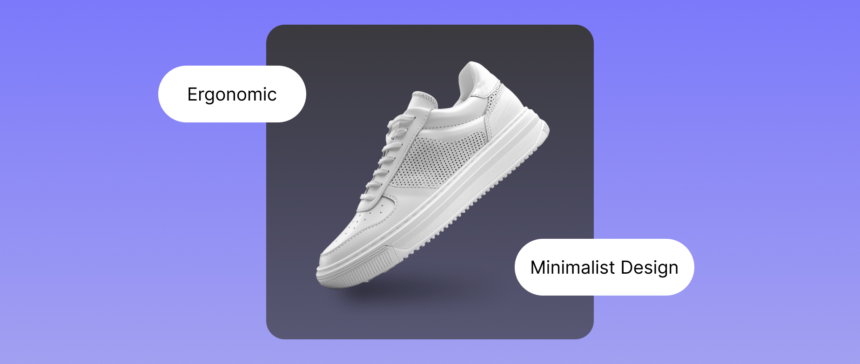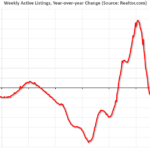For a company to be successful, its product features must solve customer problems. To develop and define product features: First, understand the problem Once you’ve identified the problem you need to solve, think about how you can provide a solution that will help you. Finally, figure out the best way to communicate the functionality of that feature to your customers.
Product capabilities are at the forefront of business strategy: Developing features that solve customer needs helps a company achieve its business and strategic objectives.
What are product features?
Product features refer to the characteristics of a product that provide value to customers. There are multiple features that give value to a product, such as design and functionality, all of which help a product stand out and satisfy potential customers.
Product Features and Product Benefits
While product features and product benefits are related and both lead to customer satisfaction, they are not the same thing. The former are concrete, tangible attributes that add value or usefulness to a product. Product benefits, on the other hand, are what customers get from using your product. Understanding this important difference can help you communicate the value of your product to potential customers.
For example, say you sell a portable audio recorder. In response to customer feedback, one of the new key features of your product is longer battery life. If battery life is a tangible feature, a benefit would be that customers can use your product for longer periods of time without needing to charge it. Another benefit would be that end users can record longer audio clips. Again, the benefit reflects the customer experience of using your product, while the feature reflects something about the product itself.
Product Function Type
Product features often fall into the following categories:
quality
Product quality refers to both durability and reputation. A quality product works as intended. It may even be made from durable materials. Having a reputation as a quality product is good for business because it can build customer loyalty. Quality can also refer to the perceived value of a particular product. If something is known to be of high quality, many customers are willing to pay a higher price.
aesthetics
Product aesthetics primarily includes tactile and visual features – the aspects of a product that are designed to make the user’s interaction with it pleasant, such as how the product looks and feels when in use. For example, a kitchen appliance with an attractive, minimalist design or a pen with a pleasant weight and shape.
Functionality
Functional features enhance usefulness and address customer pain points. A product’s core function satisfies a customer need. For example, a dress with pockets or a blender with many interchangeable blades is functional.
Product feature examples
IThe company was founded in 2015 by Vicky Pache. Dapper Boyis a body-inclusive, gender-neutral fashion brand. Vicky built the company around prioritizing product features that fulfilled customer needs that many companies at the time were not addressing.
Vicky says her product vision was to center functional pockets (a tangible feature) around her product line because many customers were not satisfied with clothes that had decorative pockets instead of deep, practical pockets. She made sure that the product’s functionality met her customer’s needs in a clear way.
“Having functional pockets shouldn’t be revolutionary,” she says. interview Shopify MasterBy adding a simple feature, the founders discovered a way to deliver a product that solved a problem. Dapper Boi identified a need among its customers and decided to prioritize product features that would help them.
The brand then focused on other factors to ensure that customer needs were reflected in the product features. Vicky noticed that other companies were not offering sizes to fit a variety of body types, so she decided to start a body-conscious fashion company to meet the need for a more inclusive size range.
The third product feature Dapper Boi offered was gender-neutral clothing. Traditional fashion brands often have items that are clearly gendered. Dapper Boi identified a potential customer market for gender-neutral clothing. By prioritizing features that solved a customer need, the brand was able to fill a gap in the market.
How we develop product features
There are several ways to develop product features, but all of them require some basic product planning, including understanding your target audience, your current customers, your competitors, and the market you plan to enter. There are four main steps to creating valuable product attributes:
1. Do your market research
Market research involves identifying market trends and gathering information about what your company can offer that others don’t. Competitor Analysis Identify a gap in the market. After researching your competitors, compare their product features and find ways to differentiate your product offering. What customer pain points aren’t currently being addressed? How can you align your features with customer needs?
For example, if you sell sun hats and find that your customers aren’t happy with the quality of the materials your competitors use, you can develop a product feature that uses stronger, more durable materials. It’s especially important to identify your customer’s needs. Then, incorporate these features into your product.
2. Understand your customers’ needs
To develop a product feature, you need to understand what your customers want. This can start with the behavior of a single customer, such as observing how they struggle with a particular part of your existing product. Then, conduct user research, listen to user feedback, and conduct empathy interviews, which are in-depth, one-on-one interviews with potential customers. From there, you can create user stories. User stories help you understand what users want and need to accomplish with your product.
3. Design the product
Now that you have collected user data and researched the market, you can incorporate features into your product design that were previously missing. Product Design Processcreate and test prototype We conduct user testing before deciding on the final version of the product. Maker Produce products on a large scale.
4. Sell your products
After you develop unique features for your product, refine your marketing strategy to communicate how your product uniquely meets a customer need. Even if your product is very similar to other products, you can differentiate it from others by developing a feature that solves a customer problem in a new way.
Product Feature FAQ
Is price a feature of your product?
Price is not a feature of the product, Find the right price is a key element of product strategy. Calculating the right price requires some strategic thinking and depends on the product manager’s research. Understanding the target users, competitors, and perceived value of the product is key.
What is the difference between product features and requirements?
Product features and requirements are related, but they are not the same thing. Product requirements are technical capabilities that can be used to create product features. For example, a key product feature might be “an intuitive button,” while a requirement might be “four clearly marked buttons that notify the user when the function is complete.” Understanding who your customers are and what they need will help you identify the requirements you need to develop key elements of functionality that will ultimately meet your customers’ needs.
How do you prioritize product features on your product roadmap?
A product roadmap is the overall strategy for your product. It includes how your product solves a customer problem and how you communicate that. It also includes your product strategy, how your product will evolve with specific features, and how your development team and product fit into your overall business strategy.







